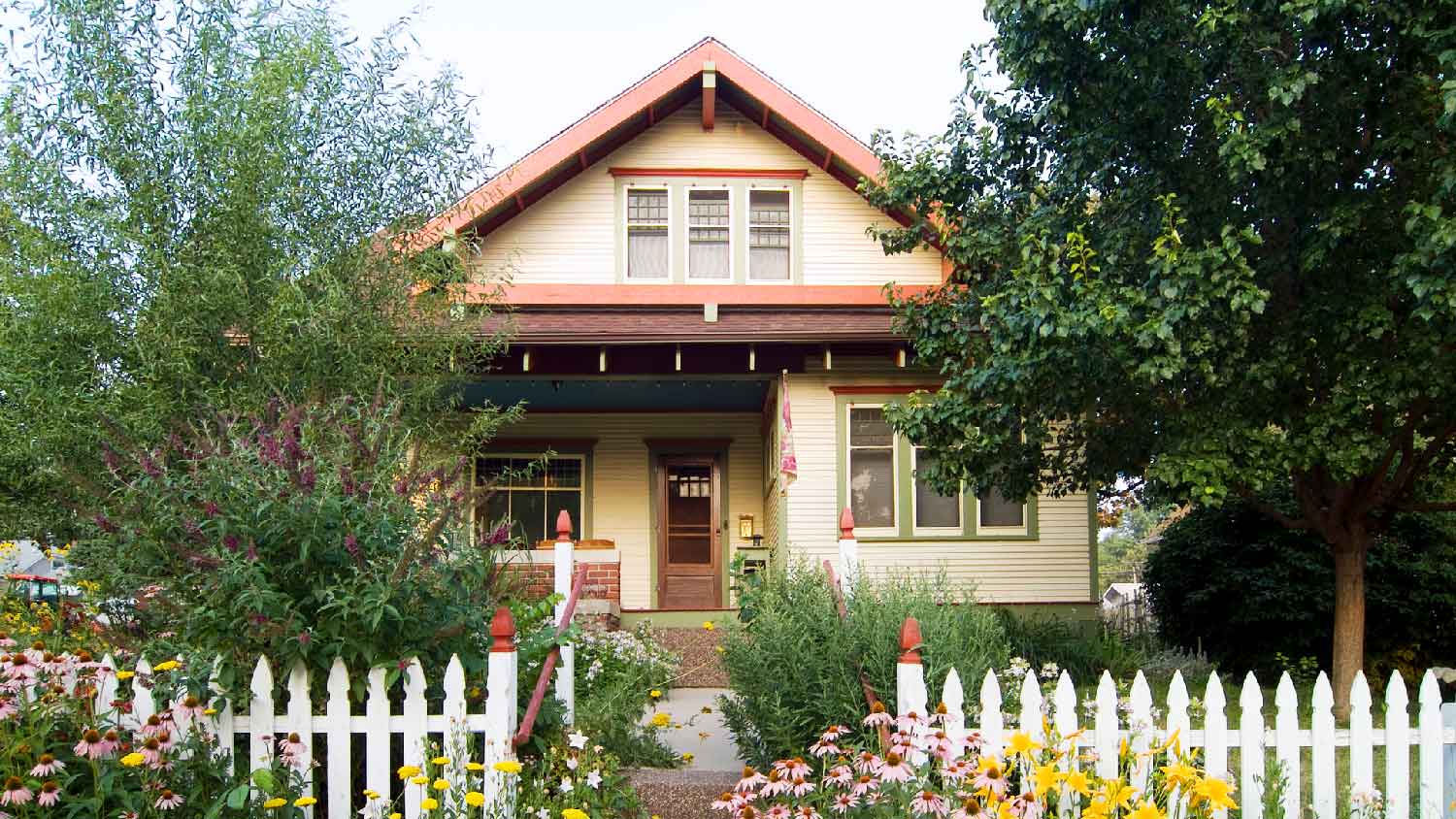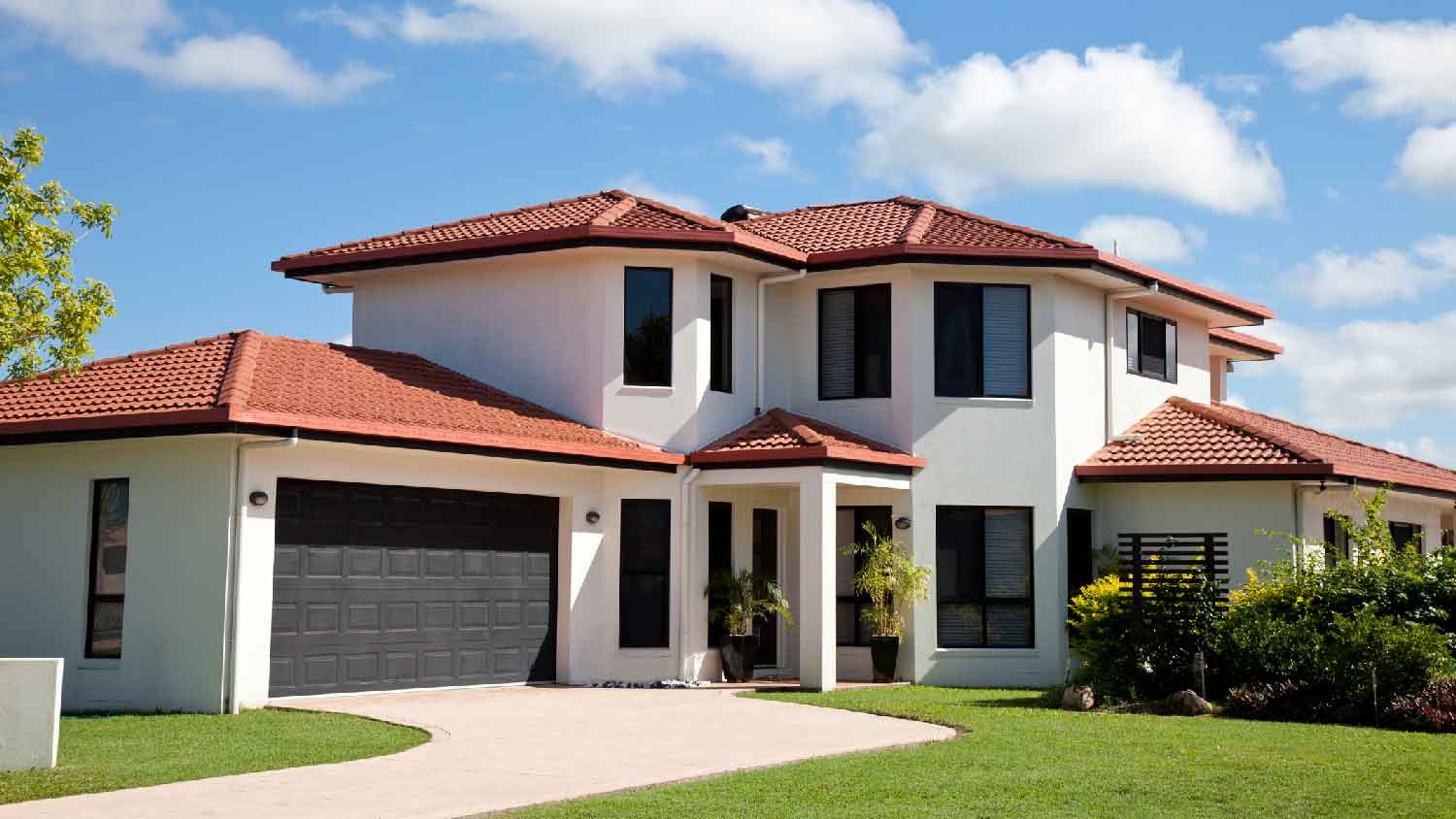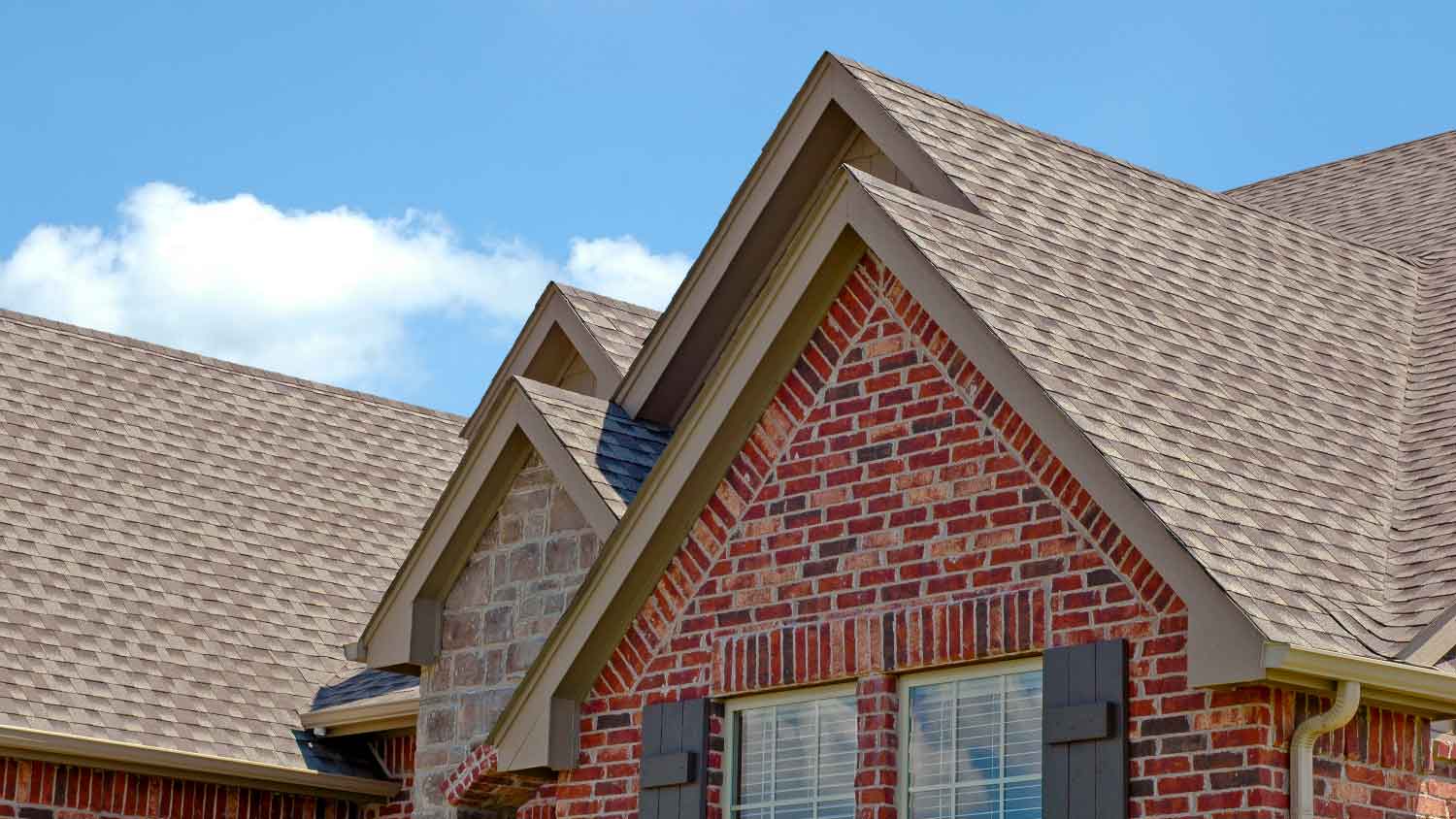Hip Roof vs. Gable Roof: Which Is Right for You?
Get hip to the differences between these two roof styles


The number of sloping sides determines the type of roof.
Gable roofs are common in cold, snowy climates.
Hip roofs are common in areas prone to hurricanes and high winds.
Your roof’s style might not be something you think about at all, but having the right style roof is a critical part of protecting your home from the elements. When you’re building new construction, you’ll need to consider the climate, your budget, and even how much attic space you want when deciding whether a gable roof or hip roof is right for your home. Learn the difference between a gable roof vs. a hip roof so you can keep your home safe and protected.
Gable Roof vs. Hip Roof: Key Differences

Gable roofs are one of the more common types of roofs in the U.S., featuring two sloping sides that meet at a ridge. They create two exterior walls on the sides of the home that extend from the ground up to the ridge and two sides with eaves. Hip roofs have four sloping sides that join together at a ridge, and all four sides have eaves extending over the exterior walls.
What Is a Gable Roof?

A gable roof consists of two sloped sides that meet at a peak and leave open, flat ends called “gables.” Gables are made of the home’s siding material and extend all the way up to the roof’s peak. This roof style is common in New England and other snowy areas, as the roof slope is more pronounced and sheds snow more easily. Types of gable roofs include the open or classic gable and the cross gable, which combines two gable sections set at right angles to each other. Before deciding if this style is right for your home, consider some of the pros and cons of gable roofs.
| Pros | Cons |
|---|---|
| Sheds snow easily | Less wind protection |
| More attic space | Less curb appeal |
| More affordable | Sloped ceilings |
| Better ventilation |
Best for:
Homes in snowy climates
Homeowners who want to maximize attic space
Homes that need additional ventilation
Pros of Gable Roofs
Gable roofs are the most common roof design found in colder climates due to their superior performance in safely shedding snow and ice. These roofs have steeper slopes than hip roofs, so snow slides off more easily, which can reduce the risk of structural damage under heavy snow loads. They also offer interior benefits—their open sides allow you to install additional ventilation like windows or gable vents, and the vaulted shape provides more attic space.
Gable roofs are simpler to construct than hip roofs, so they’re more affordable. The price of a new roof will always depend on your home’s size, the materials used, and more, but a gable roof will also cost less than a hip roof because roofing materials will only be installed on two sides rather than all four (or more). Gable roofs also only need gutters on two sides, so gutter installation costs will be lower with a gable roof.
Cons of Gable Roofs
Gable roofs may perform exceptionally well in areas that see a lot of snow, but they don’t fare as well when faced with heavy winds. The gable ends are tall exterior walls that will see more stress than those on a hip roof, where the slope on all four sides can cut some of the lateral wind load.
Most homeowners prefer the look of hip roofs, so the simple appearance of a gable roof may be less aesthetically appealing to some homeowners.
Finally, the steep slopes on a gable roof create slanted ceilings inside the home, which cut into your living space.
What Is a Hip Roof?

A hip roof is sloped on all sides with no open ends, so the walls meeting the roof are the same height on every side. Hip roofs come in many different styles, from a classic pyramid to a mansard roof, which has two slopes on each side with a steeper lower slope. All four sides of the home have eaves and require gutters.
| Pros | Cons |
|---|---|
| Better wind protection | Collects more snow |
| No sloped ceilings | More expensive |
| Curb appeal | Reduced attic space |
Best for:
Homes in areas prone to hurricanes and high winds
Prioritizing living space over attic space
Homeowners who want to boost curb appeal
Pros of Hip Roofs
For homeowners who frequently face hurricanes and high winds, hip roofs offer better protection from wind-related damage. Because hip roofs don’t have open sides, the roof slope will reduce some of the forces that would otherwise affect your gable ends on a home with a gable roof. Some insurance companies even offer discounts for homes in high-wind areas with hip roofs installed.
Hip roofs have greater curb appeal, so they’re more likely to add value to your home than a gable roof. The softer roof slope also cuts down on attic space but doesn’t leave you with the intensely sloped ceilings you’d get with a gable roof. The result is more usable living space, which can also help add to your home’s value.
Cons of Hip Roofs
Hip roofs are more expensive than gable roofs because they require more complex engineering and construction. You’ll also be left with eaves on all four sides of the home, which means you’ll need gutters on all four sides as opposed to just two. Roof installation costs and gutter installation costs will be higher with hip roofs.
The lack of gable ends reduces available attic space and decreases ventilation since the roof slopes on all sides. You may need to install roof vents instead, which can increase the risk of roof leaks due to the additional penetrations.
Hip roofs are ideal for windy climates but are less effective against snow and ice. The lower pitch and additional places where snow and ice can collect increase the odds of water damage since snow and ice remain on hip roofs longer than they do on gable roofs. In areas that see excessive snowfall, you may also see heavy accumulation that can cause structural damage.
Gable Roof vs. Hip Roof: Key Characteristics, Compared

If you’re not sure whether a gable roof or a hip roof is right for you, consider all the following before deciding.
Installation Cost: Gable Roof
Gable roofs are the more cost-effective option since you’ll use less roofing material due to fewer slopes you need to cover. The construction process is also simpler and more affordable, and your gutter installation costs will be lower. Look for a local roofer with experience installing gable roofs to ensure the job is done right.
Maintenance Costs: Tie
Hip roofs will require repairs less often in areas that see intense winds, but gable roofs have a lower risk of structural damage in areas that see heavy snowfall. Roof maintenance will depend entirely on your climate.
Appearance: Hip Roof
A hip roof will boost your home’s curb appeal with its symmetrical look and eaves that fully surround the home. Gable roofs have a simpler appearance and expose far more of the home’s siding material, breaking up the visual line of the roof.
Weather Resistance: Tie
The style of roof that’ll offer the best protection from the elements depends on where your home is and what kind of weather you experience. In cold, snowy climates, a gable roof will stand up better to the weather, and in windy, hurricane-prone areas, a hip roof will endure the harsh winds with a lower risk of damage.
Ease of Installation: Gable Roof
Gable roofs are simpler and more affordable to install, and they use less roofing material than hip roofs that have double the roof slopes. You’ll also need about half of the gutter material for a gable roof, which means a lower cost when it’s time to install gutters.
Attic Space: Gable Roof
If you’re looking to maximize your usable attic space, a gable roof is the way to go. With a higher pitch, a gable roof allows you to turn otherwise wasted attic space into functional storage. You can maximize attic space under a gable roof by choosing attic trusses, which create a boxed in area for more room.
Living Space: Hip Roof
Hip roofs have a less dramatic roof slope, which means the ceilings inside won’t be nearly as slanted. You’ll get more usable living space as a result.
Which Roof Style Should You Choose?
You should base the roof style you choose primarily on the climate in your area. If you see above-average snowfall, a gable roof is the best option, as it sheds snow and ice and reduces the risk of structural damage. If your area sees hurricanes, tropical storms, or tornadoes, a hip roof is best, as the slopes cut down on wind forces on your home.
If you live in a moderate climate where neither is an issue, choose a gable roof for a lower installation cost, and go with a hip roof if you’d rather prioritize curb appeal and usable living space.





- Roofers
- Metal Roofing
- Roof Repair
- Roof Inspection
- Vinyl Siding Repair Contractors
- Flat Roofing Companies
- Commercial Roofing
- Emergency Roofing Companies
- Leaky Roof Repair
- Metal Roof Repair
- Business Roof Repair
- Flat Roof Repair
- Tile Roof Repair
- Slate Roofers
- Rubber Roofers
- Roofing & Siding
- Metal Roof Installation
- Affordable Roofing
- Roof Sealing
- Attic Ventilation Contractors
- 14 Common Roof Types and Their Pros and Cons
- 8 Gable Roofing Pros and Cons to Know About
- What Is a Gable Roof on a House?
- What Is a Gable Vent and What Does It Do?
- How to Build a Roof For Your Home, From Start to Finish
- 7 Flat Roof Maintenance Tips to Help Avoid Repairs
- 2024 Metal Roof vs. Shingles Cost Comparison Guide
- Gable Vents vs. Ridge Vents: Pros, Cons, and Costs
- Explore the Pros and Cons of Roof Cleaning
- 30 Common Roofing Mistakes You Need to Know










